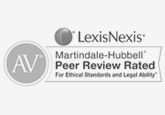Medicaid Fraud Schemes: An In-Depth Examination
Medicaid, a critical public health program in the United States, provides vital medical assistance to millions of low-income individuals and families. However, the program’s extensive reach and substantial funding make it a prime target for fraudulent activities. This document aims to elucidate the various schemes employed to defraud Medicaid, the ramifications of such fraud, and measures to combat these illicit activities.
Types of Medicaid Fraud Schemes
1. Billing for Services Not Rendered: One of the most prevalent forms of Medicaid fraud involves healthcare providers submitting claims for services that were never provided. This can include billing for fictitious patients, services, or equipment.
2. Upcoding: This scheme involves providers billing Medicaid for more expensive services than those actually performed. For instance, a provider might bill for a complex procedure when only a basic one was conducted, thereby receiving higher reimbursement.
3. Unbundling: Providers may also engage in unbundling, where they submit multiple separate claims for services that should have been billed together at a lower cost. This practice inflates the total amount reimbursed by Medicaid.
4. Kickbacks and Referral Schemes: Another significant form of fraud includes illegal kickbacks and referral arrangements. Providers may receive financial incentives for referring patients to specific services, facilities, or suppliers, violating federal anti-kickback statutes.
5. Phantom Providers: In this scheme, fraudsters create fake provider identities and submit claims for services or supplies never rendered. These phantom providers often disappear once payments are received, making detection and prosecution challenging.
6. Patient Fraud: Patients themselves can also engage in fraud by providing false information to qualify for Medicaid, selling prescription medications obtained through the program, or colluding with providers in kickback schemes.
Consequences of Medicaid Fraud
The impact of Medicaid fraud is profound and multifaceted. Financially, it drains billions of dollars from the healthcare system annually, funds that could otherwise be allocated to legitimate medical services. Beyond the financial implications, fraud undermines public trust in the healthcare system and can lead to diminished care quality for those genuinely in need.
Combating Medicaid Fraud
Efforts to combat Medicaid fraud are multifaceted, involving federal, state, and local agencies. Key strategies include:
1. Advanced Data Analytics: Utilizing sophisticated data analysis to detect unusual patterns and anomalies in billing practices can help identify potential fraud schemes early.
2. Enhanced Regulatory Measures: Strengthening regulations and oversight can deter fraudulent activities. This includes rigorous provider enrollment processes and regular audits of Medicaid claims.
3. Interagency Collaboration: Coordination between various government entities, such as the Centers for Medicare & Medicaid Services (CMS), the Office of Inspector General (OIG), and state Medicaid Fraud Control Units (MFCUs), is crucial for effective enforcement and prosecution of fraud cases.
4. Whistleblower Programs: Encouraging and protecting whistleblowers who report fraudulent activities can lead to the uncovering of significant fraud schemes. Programs like the False Claims Act provide financial incentives for whistleblowers, fostering a culture of accountability.
5. Public Awareness Campaigns: Educating the public and healthcare providers about the signs of Medicaid fraud and the importance of reporting suspicious activities can play a vital role in prevention.
Conclusion
Medicaid fraud is a serious issue that necessitates a comprehensive and coordinated response. By understanding the various schemes employed by fraudsters, recognizing the severe consequences of such actions, and implementing robust preventive measures, we can protect the integrity of the Medicaid program and ensure that it continues to serve those in genuine need. Through vigilance, collaboration, and innovation, we can mitigate the impact of fraud and safeguard the future of public healthcare.





